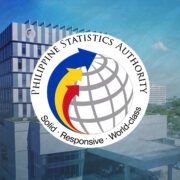IMF flags real estate, consumer credit risks
The International Monetary Fund (IMF) flagged potential “pockets of vulnerabilities” in the banking system that the Bangko Sentral ng Pilipinas (BSP) must closely monitor to protect financial stability, particularly risks from still-high vacancy rates in the local property sector and fast-rising growth in consumer credit.
Elif Arbatli Saxegaard, head of the visiting IMF team, said “continued vigilance is warranted” against possible systemic risks coming from the real estate sector which, she explained, had undergone a “big shift” following the exodus of online casinos and the pandemic-induced pivot to work-from-home arrangements that emptied many office spaces.
“There are some segments of the commercial real estate market in particular where the vacancy rates remain quite high. So that’s, for example, a space that should be monitored carefully,” Saxegaard told a press briefing.
Lending to households
On the rapidly growing consumer lending sector, the IMF official said the BSP must ensure that banks are increasing their exposure to households with tested credit profiles to avoid losses from unpaid loans.
“Whenever we see credit growth picking up very strongly in one segment, this is typically a sign that you should look at it more carefully and ensure that a strong pickup in credit remains healthy and is going to the healthy borrowers,” she added.
Latest data from the BSP showed that 6.7 percent of the residential mortgage portfolio of banks had soured in the second quarter, still higher than the prepandemic level of 3.1 percent.
But this was better than when the ratio of bad housing loans peaked at 9.6 percent in 2021, reflecting the growing aversion of banks to extend home loans to online casino workers. President Marcos recently ordered the controversial online gaming sector being linked to money laundering to wind down quickly.
Macroprudential policy needed
Meanwhile, figures from the BSP showed that outstanding consumer credit of big banks had amounted to P1.4 trillion as of June, accounting for 11.6 percent of their total lending portfolio.
Notably, banks’ household loan portfolio had grown by almost twice of the prepandemic level, despite the high interest rate and elevated inflation in the past months that may crimp borrowers’ ability to repay their debts.
But Saxegaard said Philippine banks are nevertheless staying profitable, adding that systemic risks “remain moderate.”
“Adjusting macroprudential policy as credit picks up … will help preempt the buildup of vulnerabilities. Efforts underway to update the bank resolution framework will benefit from parallel efforts to improve emergency liquidity assistance and lender-of-last-resort frameworks,” she added.





















